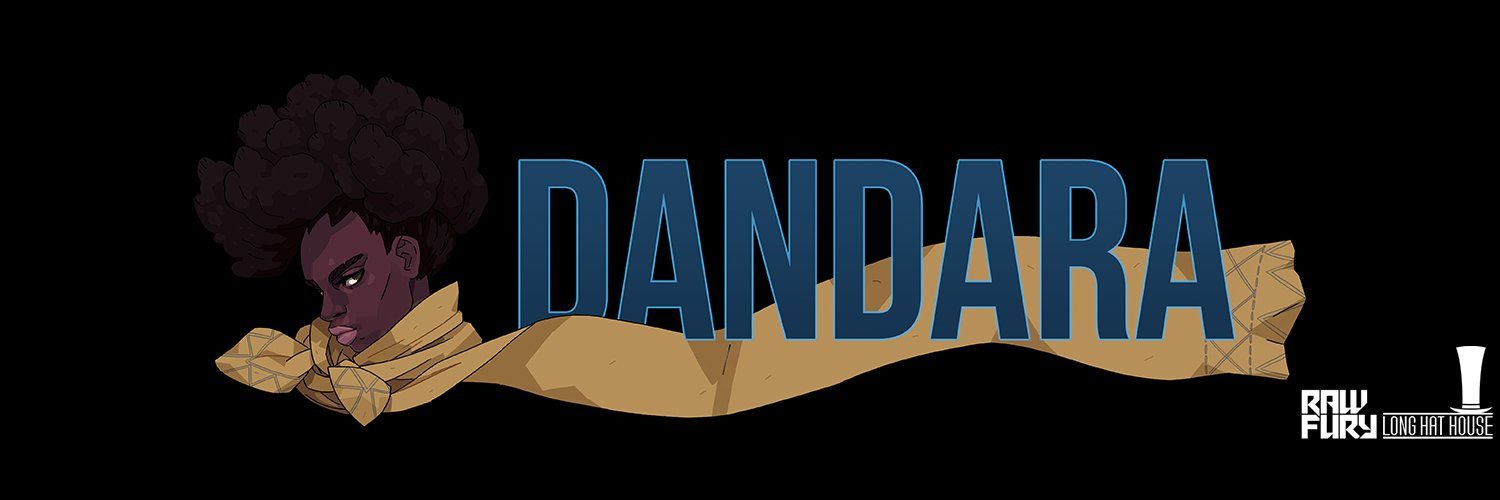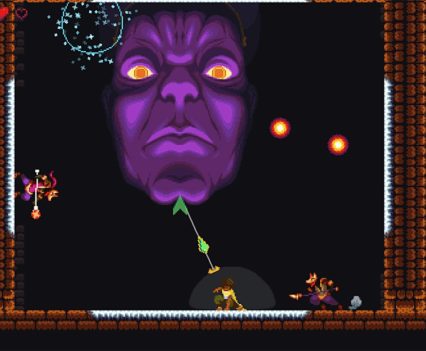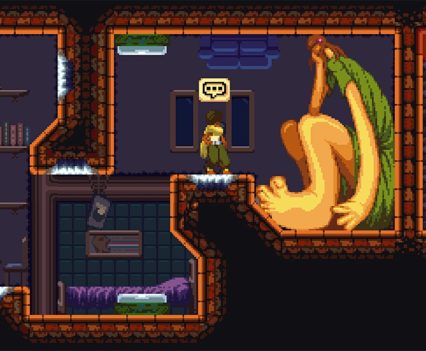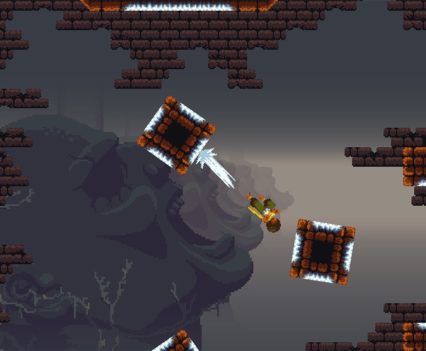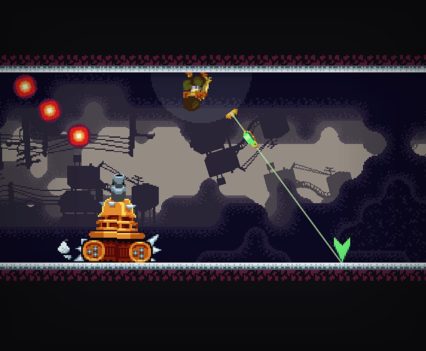Dandara describes itself as a ‘Metroidvania’ and while that title mostly holds up, I would much rather play a Metroid or a Castlevania game.
I was very intrigued when I first saw gameplay for Dandara. The idea of an exploration game where the gravity is dependent on which way the platform is facing was intriguing. While I can applaud the unique idea and ingenuity required to develop Dandara, it ultimately wasn’t as fun to play as I had hoped.
The gameplay in Dandara is complex. Since the game doesn’t feature any traditional ‘gravity’, players have to use an aiming system to traverse the world. There is no movement unless it comes via a jump to another surface, whether that’s on a ‘ceiling’ or adjacent wall. There’s no real ‘up’ or ‘down’ in Dandara’s world. When you are on a platform, an arrow displays showing where Dandara can ‘jump’ to next and at what angle. By linking jumps together using the analogs sticks and the jump button, players can move through the world. Dandara also supports the touch screen for movements and shooting, but it felt even more laborious than the gamepad controls.
One thing that was immediately noticeable when playing was how slow I felt moving Dandara around the landscape. I was thinking too much about where to jump that my overall progression felt sluggish. I finally realized I didn’t need to be as ‘precise’ with where I aimed for my next jump. I could simply keep pressing the jump button and as long as my aiming cursor was to the left or right of me, I would continue jumping off walls in that general direction. This was a revelation but it also meant my movements were less precise. I would inadvertently run into enemies or go in a different way at a fork in the road than I intended. The controls felt ‘tight’ at times but I always felt like I was meandering more than precisely controlling my character.
The presentation in Dandara is quite good. The opening sequence and Dandara herself are well designed. The animations are fluid and the artwork throughout the game was really fun and unique. The enemy designs didn’t feel as interesting though. One bright spot for the Switch version is the use of HD Rumble which was implemented very well.
In the end, I didn’t enjoy my time with Dandara. The controls, while unique, just didn’t work well for me–especially in combat. Dandara wants players to explore but the incentive just wasn’t there. If you’re looking for a Metroidvania with a unique control experience and a great art styles, Dandara might fit that bill. Otherwise, I’d pass on this otherwise beautiful game.
Review: Dandara (Nintendo Switch)
Fair
In the end, I didn’t enjoy my time with Dandara. The controls, while unique, just didn’t work well for me–especially in combat. Dandara wants players to explore but the incentive just wasn’t there. If you’re looking for a Metroidvania with a unique control experience and a great art styles, Dandara might fit that bill. Otherwise, I’d pass on this otherwise beautiful game.

